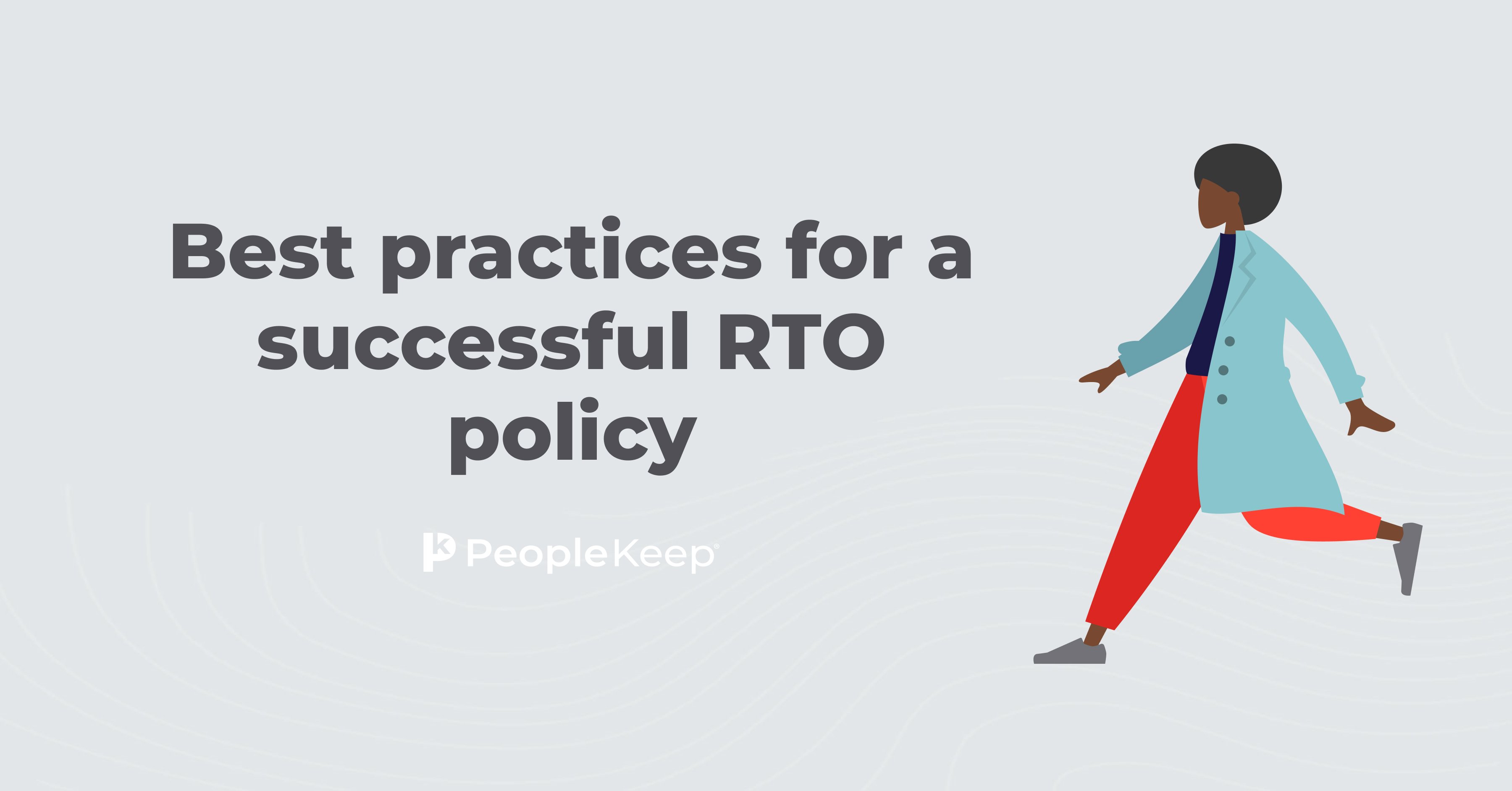20 surprising employee retention statistics you need to know
By Bonus.ly on November 2, 2019 at 12:21 PM
Employee retention is top-of-mind for nearly every organization, and it’s easy to see why—losing employees can mean losing valuable institutional knowledge, lower morale in remaining team members, and lost productivity.
Welcoming new employees is fun, but saying goodbye to trusted, high-performing team members is a real bummer.
Even the best leaders can have a hard time keeping top talent, but that doesn’t mean you should give up! Being mindful of the core issues that drive turnover goes a long way in improving retention. Here are 20 surprising and illuminating employee retention statistics you may not have heard, and some simple strategies to help you keep your team together—for the long term.
Learn more about human resources ROI calculations here
1. About 3 million Americans quit their job each month.
Let’s start with the big one. Not counting layoffs or any other types of involuntary termination, data from the US Bureau of Labor Statistics shows that three and a half million employees have left their jobs voluntarily every month since January 2019.
To put that into perspective, that’s the equivalent of the combined populations of Wyoming, Alaska, Vermont, North Dakota, and Washington, DC, handing in their resignation each month.
This level of voluntary turnover speaks to the magnitude of the retention issue that many organizations face. People leave their jobs for different reasons, and the better grasp you and your team have on those reasons, the better you’ll be able to keep great employees longer.
2. In a study of over 1,000 workers, 31% reported having quit a job within the first six months.

Our friends at BambooHR surveyed over 1,000 currently employed Americans and found that nearly a third of them have left a job before crossing the half-year mark.
Why are so many recently hired employees jumping ship?
According to the research participants, the top reasons for leaving so soon after starting a new job were poor onboarding experiences, a lack of clarity surrounding job duties and expectations, or a less-than-stellar boss.
This is actually good news.
Why?
Because these factors are within your organization’s control!
Transparency is a crucial element of trust, and trust is paramount in any relationship, including professional ones. If the first few days of an employee’s experience are punctuated by a breach of that trust, you can expect their tenure to be short. That's why it's crucial to ensure the work an employee signs up for is the work they'll actually be doing day-to-day.
A strategic onboarding program can also make a significant difference for newly hired employees by providing clarity around their role, a community of trusted colleagues, and a clear path to success.
3. More than 50% of all organizations globally have difficulty retaining some of their most valued employee groups.
A recent Willis Towers Watson study shows that turnover is a nuanced issue. Although hiring has increased in recent years, turnover and attrition rates have also increased for many organizations. This is rough, but it's not just the number of employees who leave—it's the types of employees who leave, and the reasons why they're leaving that deserve a closer look.
If you have an exceptionally productive employee in your organization, it's crucial to recognize the massive value they're bringing to the table. If they're producing a prodigious amount of work but aren’t rewarded for it, they're likely going to fall into the high-retention-risk group at some point.
If they get the sense that their skills or productivity are being taken for granted, even the most efficient employees are susceptible to burnout. Then, that job offer plus a pay bump from your organization’s competitor is going to look more attractive each time it comes up.
4. 87% of HR leaders consider improved retention a critical or high priority for the next five years.
According to research by Kronos and Future Workplace, 87% of HR leaders are aware of the importance of employee retention and consider it a primary concern.
Despite that focus, progress for many organizations have been stymied by competing priorities and a lack of resources.
Technology debt and a lack of process automation tooling were cited as major roadblocks. Other factors included limited executive support and organizational vision.
5. The cost to replace a highly-trained employee can exceed 200% of their annual salary.

Turnover is expensive, no matter what type of position an employee holds. Estimates on the true cost of losing employees vary based on multiple factors, but recent research found that the cost of replacing highly-trained employees and executives can easily exceed double their annual salary.
Although that may seem like a massive cost, the true cost is likely even higher.
One of the most effective ways to lower the cost of turnover is to lower the rate of turnover. Focus on fostering an engaging, rewarding work environment that inspires employees to believe in your mission and do their best work while they're on your team.
6. More than 25% of employees are in a high-retention-risk category.
According to research from Willis Towers Watson, over one-quarter of employees are at a high risk for turnover. Many of those people possess mission-critical skills and are either top performers or have the potential to become top performers. The best strategy is to avoid losing them in the first place.
It all starts with identifying which people on your team fall into the high-retention-risk category. This takes open and honest communication, including the hard topics. Are they happy? What could you be doing better? Is there anything they need more of to be successful? Keeping an open dialogue with your team can provide priceless insights into their collective engagement and the engagement levels of individual members.
7. 46% of high-retention-risk employees used apps to find new jobs in the past month vs. 13% in low-risk groups.
Modern technology and social media are making it much easier to look for a new job, and recent research shows that nearly half of the employees considered to be high-retention-risk used a mobile app or website to search for new jobs within the past month.
While you can't exactly stop your own employees from looking elsewhere, this is good to keep in mind for attracting talent. Make sure your organization's online presence is updated, and be sure to promote your new job postings!
8. Companies that support remote work have 25% lower employee turnover than companies that don't.

Collaborative research from Owl Labs and TINYpulse found that supporting a remote work program can have a meaningful impact on employee retention.
Whether it’s a flexible work schedule with an occasional ad-hoc remote day, or a more permanent remote work arrangement, there are many ways that remote work can improve employee experience.
In some cases, remote work makes it possible to attract and keep great employees that would never have considered your organization otherwise.
Some excellent candidates may have situations that keep them from working in an office environment regularly. You might be surprised to find out how many employees are ready to leave their jobs simply because... their commute sucks.
Providing the flexibility to work remotely can significantly relieve those pressures.
You don’t have to manage a completely distributed organization for your team to enjoy the benefits of a well-designed remote work program. These days, there are so many resources available to help make remote work easier to implement and more sustainable.
9. More than 70% of high-retention-risk employees say they'll have to leave their organization to advance their career.

According to Willis Towers Watson, nearly three quarters of employees who fall into the "high-retention-risk" category are itching to leave because they have nowhere else to go on their current organization’s career ladder.
Nobody wants to work a dead-end job! If an employee feels their advancement is being stifled by their environment, they're going to leave. It's not due to a lack of loyalty and it's not their fault. You can’t blame them.
Just like how successful businesses won't remain in a stifling environment out of a sense of duty, or misguided loyalty, neither will a smart employee—especially if their skills are highly desirable.
This career advancement limitation can come in many forms, but there are just as many ways to avoid it.
- Offer and encourage professional training and development.
It's unfortunately common to hear leaders say they're hesitant to invest in employee training and professional development initiatives because they're concerned that the efforts would groom them for their next job in a different company.
Personal growth and development are a crucial element of what your organization can offer to any employee, and the benefits extend in every direction. Supporting their development ensures they'll be more engaged, more productive, and better at what they do.
If the time does come for them to leave, they'll be able to honestly tell others how much they grew while working for your organization, rather than how stifled they felt or the opportunities they missed out on.
- Offer your employees a better individual contributor role or leadership opportunities.
If your employees are interested in managing others, providing even small opportunities to experience this type of work and build these skills can go a long way.
Of course, not everybody is interested in becoming a manager—luckily, the idea that you have to manage people to move up on the career ladder is less true now. For these team members, steer them toward more individual contributor roles.
10. 35% of employees said they'd look for a new job if they did not receive a pay raise in the next year.
Research by Glassdoor states that 35% of employees are so unsatisfied with their salary that they're willing to start a job search over it.
In a case where salary offers are equal (or close), the company with the strongest culture will nearly always win. Culture is an incredible retention driver, but only if you're already keeping up with basic table stakes.
If your organization is not willing or able to maintain salary parity, you can't expect to compete for talent effectively. This is especially true in regards to employees with highly valuable skills.
11. 44% of employees say they would consider taking a job with a different company for a raise of 20% or less.

Another Gallup poll found that a pay bump of 20% (or less, in many cases) is all it would take for almost half of the respondents to job hop.
Among actively-disengaged employees, as many as 54% of respondents would leave their current positions for a salary increase of 20% or less. Among engaged employees, the number was dramatically reduced to 37%.
It doesn't take a much higher salary offer for you to lose an employee. Since most employees can expect their annual salary increase to be a percentage in the low single digits, competitors can easily beat those numbers in their recruiting efforts.
Your competitors aren't likely to set a precedent of paying above market value for employees, though. If you're already paying your team at market rate or better, it will be considerably harder for your competitors to slide in and offer a 20% pay bump.
The challenge here is twofold:
- Understanding what it takes to keep employees engaged in order to limit your overall exposure to job hopping.
- Keeping your finger on the pulse of what market rate actually is for each position on your staff.
If you can keep your employees engaged and pay them market rate, you’re greatly reducing the chances that they’ll jump ship.
12. More than 50% of American employees believe that if they lost their current job, they would be able to replace it in the next six months.
Another recent study from Glassdoor shows that over half of American employees have a high level of confidence that they'd be able to find a job at the same level within six months or less if they quit, are fired, or are laid off.
Why is this information important? Because when the global economy was in considerably worse shape, employees were less confident they’d be able to find a new position at the same level—if they could find a new position at all. That apprehension was enough to keep many employees from leaving their current position, even if they weren't happy or fulfilled in it.
Now that employees feel more confident about their prospects, it’s up to organizations to provide the kind of environment that encourages them to stay.
13. 65% of employees are confident they can find a better position that pays more.

Research by Dice backs up Glassdoor's findings, and takes it a step further. Their research suggests an even higher number of employees are not only confident that they'll find a new position, but also that they'll find an even better position than their current one.
This is just further evidence that skilled labor has become a seller's market. Increased confidence in new job prospects combined with a decline in overall salary satisfaction is a one-two punch that can leave many organizations wondering, “Where did all our top talent go?”
The best defense against this type of turnover is deceptively simple: be the better position.
The hard work is in determining how to be that better position, and then making that determination a reality. This requires employee input. What a group of managers or executives believe is a better job experience could be (and often is) dramatically different from the employee's belief.
It could be an issue as simple as, "My chair is terrible, and I have no windows near me. It makes me feel like my company doesn't care about my comfort."
Maybe a window is a physical impossibility in your case, but that doesn't mean there's nothing you can do to design a better workspace. Get creative. Show your employees that you genuinely care about them and about improving their situation. Give them a few extra opportunities to go outside each day—that "unproductive" time will likely have a dramatic effect on their overall productivity and satisfaction.
The best way to find out how you can improve a person's work experience is to ask them. Solicit feedback regularly, and show visible signs of progress towards improvement.
14. Employees who are "engaged and thriving" are 59% less likely to look for a job with a different organization in the next 12 months.
Further Gallup research found that although engaged employees are surely less likely to leave your organization, employees who are engaged and thriving are even less likely to leave.
Aren't being engaged and thriving the same thing? We think not. 🧐
Consider them more like two parts of a whole. Engagement is best described as an employee's emotional commitment to an employer, its constituents, its values, and its purpose. On the other hand, thriving is dependent on an employee’s well-being, consisting of factors like physical and mental health, stress levels, and so on.
If you look at this from the perspective of Fredrick Herzberg's motivator-hygiene theory, most elements of well-being fit into the spectrum of hygiene factors, and the elements of engagement often fit into the spectrum of motivational factors.
As the theory states, you can have one without the other, but the two work in tandem.
For instance, you can have a great mission to work on, but terrible equipment. You can walk into an environment of boring drudgery every day, but have the best equipment and resources. The best outcomes arise when a multitude of both hygiene and motivational factors are accounted for: working on great equipment to complete an exciting and important mission.
15. 93% of young professionals say they left their employer the last time they changed roles.

A recent Gallup poll showed that a vast majority of millennials took new jobs at new companies, rather than advancing in their current organization. While it may seem easy to dismiss this as "standard millennial job-hopping behavior," there's a lot more at play here.
Among millennials, we discovered that the top five factors are:
- opportunities to learn and grow
- quality of manager
- quality of management
- interest in type of work
- opportunities for advancement
Since so many of this cohort of employees took new jobs at new companies, it can be assumed that they felt stagnant at their previous roles or unsupported by managers. This leaves it up to companies to provide a better experience for their younger team members.
16. 41% of employees listed job security as the most important reason to stay in a company.
A Willis Towers Watson study of over 31,000 employees worldwide found that job security was a major retention driver.
That held true for employees across generations—in fact, the study found that “job security is the second-most frequently selected driver of attraction across all key age groups.”
While the job-hopping millennial and long-tenured baby boomer are both tragically common stereotypes, the data suggest that job security is important to modern employees regardless of the generation they were born in or the industry in which they work.
If employees feel as though their time at your organization might be fleeting, they’re likely to look for the next safe harbor. Consider how managerial interactions and internal communications can impact an employee’s sense of job security and make it a priority to help them understand the value of their place in the organization.
17. 46% of HR leaders say employee burnout is responsible for up to 50% of their annual workforce turnover.

Although startup employees are often depicted as the poster children for burnout, research has shown it’s a prevalent issue for organizations of all types across the world. There are several key contributors to employee burnout, and most of them are solvable if you’re able to identify them early on.
See if you recognize any of these traits in your own workplace, and if you do, consider how they might be alleviated.
No fun: Work isn’t all fun and games, but that doesn’t mean it should never be fun. Make sure there are opportunities for the team to interact with one another outside the context of project deadlines and meetings.
No ownership: It’s difficult for employees to become invested in something they have little or no ownership over—that investment is critical to engagement, and ultimately, retention.
Poor balance: Are employees praised for "taking one for the team" by working late? That's a dangerous precedent to set. If you don't allow your employees enough time to pursue their passions and recharge, they’ll eventually burn out. And when they do, they'll leave.
Whether you’re appreciating HVAC techs, vet techs, or IT techs, a little employee recognition can go a long way in preventing burnout. Learn more about spotting the signs of burnout and resolving it before it escalates to a resignation.
18. Strong management transparency leads to 30% better employee retention.
Transparency isn’t just important as the foundation of trust and a healthy employment relationship—it’s also a major retention driver, according to research by TINYpulse.
Employees are more likely to stay in an organization where they can trust management and senior leadership. Fostering transparency doesn’t require you to take the “radical transparency” approach—although it works great for some companies. Your approach can be something as simple as defaulting to transparency.
This means that instead of asking, “Is it absolutely necessary to share this with my team?” ask, “Is it absolutely necessary that I keep this from my team?”
19. Employee happiness is 23.3% more correlated to connections with coworkers than direct supervisors.

Team relationships matter, and they matter on a level that is bigger than you might expect. As part of a recent employee engagement survey, the team at TINYpulse found that employee happiness is much more closely correlated to the connections they share with their coworkers rather than those they share with their direct supervisors.
This doesn't mean that the connection an employee has with their supervisor is unimportant—far from it. An employee's relationship with their supervisor matters a great deal, but it's often their coworkers that truly inspire them to go the extra mile at work.
There are many ways to inspire stronger coworker relationships, like team outings and activities, but to get the best results, it's best to bake it into your organizational culture—right down to the way your spaces are organized.
Building spaces that encourage organic interactions between employee and encouraging those interactions can make a dramatic impact on the way relationships sustain people at work.
20. Employees who are not adequately recognized are twice as likely to say they’ll quit within the next year.
A Gallup workplace survey revealed that only one in three employees strongly agree that they’ve received praise for the work they’ve done in the past seven days. Those employees who don’t feel recognized are twice as likely to say they’ll quit within the year, meaning that leaders and managers are missing out on the powerful impact of recognition on retention.
Recognition not only boosts individual employee engagement, but it also has been found to increase productivity and loyalty to the company, leading to higher retention.
–Annamarie Mann and Nate Dvorak, Gallup
In conclusion
Although some of these employee retention statistics may seem alarming, it's not all bad news. Understanding what drives employee behavior and working to cultivate a stellar work environment with a solid employee value proposition will go a long way toward helping your organization beat the odds on retention.
If you want to share these statistics with your colleagues, download the PDF version of this blog post, and take the next step towards retaining your best employees.
Download our employee retention eBook to learn how to keep your most valued employees without breaking your budget.
Check out more resources
See these related articles

How to create a positive workplace culture
Building a positive workplace culture is key to employee satisfaction and company success. Discover practical tips in this blog post.

Best practices for a successful RTO policy
Need help creating an effective RTO policy? This comprehensive guide covers everything you need to know, from key considerations to implementation tips.

Employee retention: The real cost of losing an employee
Employee turnover is costly. Discover the true cost of losing an employee and how improving retention can protect your bottom line and team performance.



